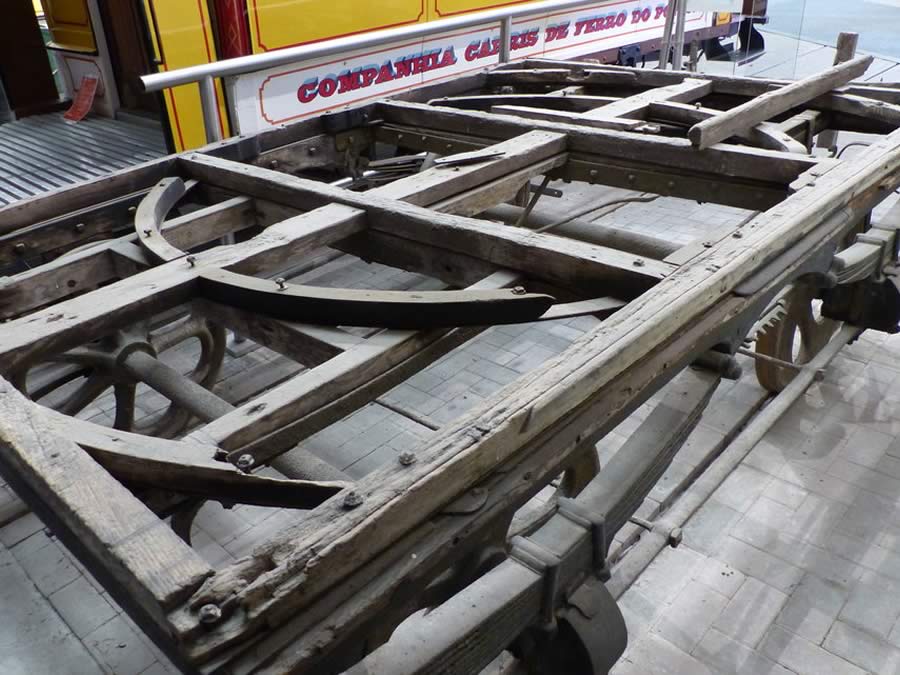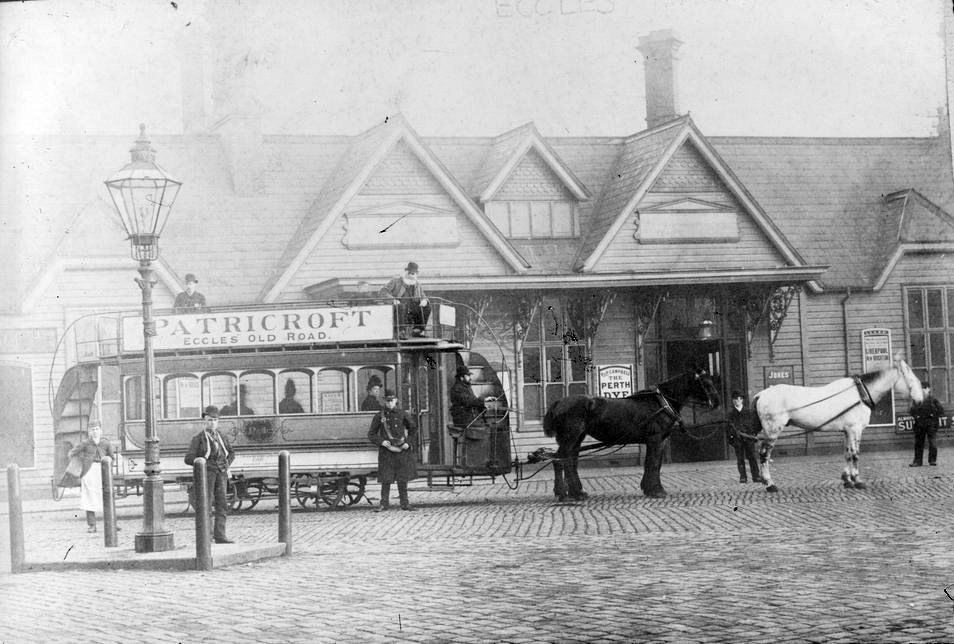It also meant that every car needed to be provided with a platform and stair case at each end (as with Leeds 107), which added to the weight and expense of construction. An additional drawback was that it reduced the number of passengers who could be carried on each trip, thereby increasing the operating costs.
In 1977, however, Mr John Eades, who was a coach builder and superintendent at the Manchester Carriage and Tramway Company, patented the “Eades Reversible tramcar”, which was attached to the truck by means of a single locking pin. This ingenious mechanism enabled the complete body to swivel round at the terminus with the horses still in harness and without any need for the driver to dismount. This ability also earned it the nickname the “spinning-top” car.

A Chesterfield Eades horse tram turning at the terminus during the 1890s. Photo courtesy of Crich TMS photo archive
As a result, it was claimed that the car could be reversed in ‘four seconds’ and ‘pole-shifters’ could be dispensed with, thereby improving its operational efficiency. Equally importantly, it meant that the second set of stairs and platform could be dispensed with, which reduced construction costs and resulted in a remarkably light-weight car that was capable of carrying more passengers. Consequently, the tramcar only needed a stud of eight horses for its daily operation, instead of the normal twelve.
So perhaps it is not surprising that by the 1880s almost the entire fleet operated by the Manchester Carriage and Tramways Company consisted of Eades reversible horse trams. The Company itself was described as operating the most extensive system of tramways in the British Isles during this period. Altogether a total of over 500 such tramcars were produced for the Manchester and Salford district and many more trucks were built under licence to a similar design by the Ashbury Railway, Carriage and Iron Co. Ltd. of Openshaw, Manchester.
Other horse tramways that made use of the Eades reversible truck were Bradford, Chesterfield, Dundee, Leeds, Liverpool, Newcastle, the North London Tramways Company, Sheffield, South Shields, Stockport & Hazel Grove, Sunderland, Wallasey, and also the Tramways Sud in Paris.
The Eades reversible truck undoubtedly had a major impact on the operation of many horse drawn tramways but after a while it began to fall out of favour with some authorities as it was considered that the turning of the tramcars at each terminus posed an obstruction to other road users as many streets, particularly in cities like Glasgow, became increasingly congested. However, it was the development of electric traction that ultimately heralded its demise even though John Eades sought to demonstrate that the Eades reversible truck could also adapted for use by electrically operated tramcars.
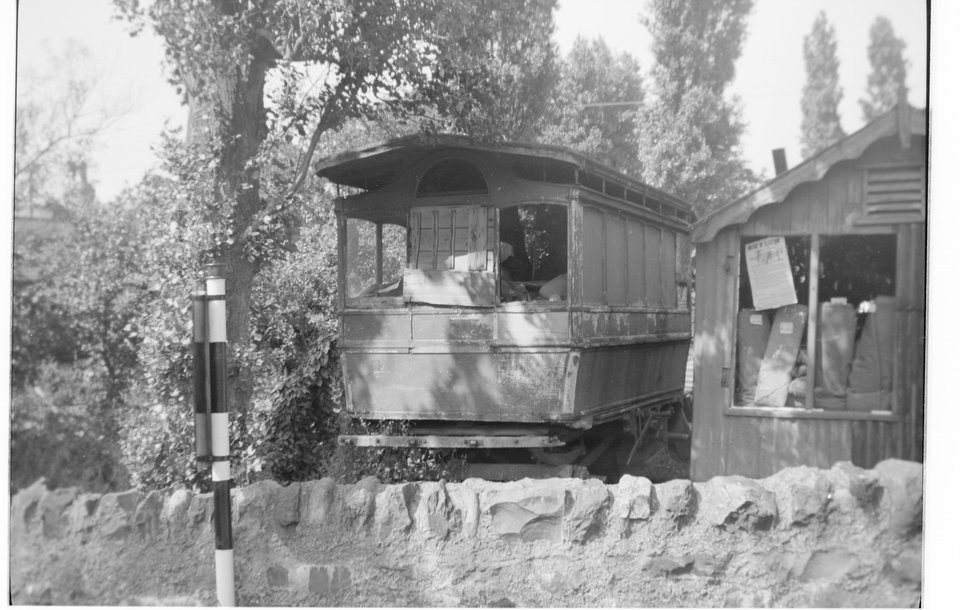
Ex-Manchester Carriage & Tramways Company horse tram body L127 converted into garden shed. Location and date unknown, M .J. O’Connor
Once the conversion to electric traction gained momentum large numbers of horse cars became redundant in a short space of time and many were sold off cheaply for use as garden sheds, summer houses and the like. Of the 500 plus horse trams operated by the Manchester Carriage and Tramways Company at least one is known to have survived.
This remarkably intact specimen – consisting of lower deck and with wheels still intact – was recovered from nearby Glossop, where it had survived for many years serving as an annexe to a hairdressing salon and as part of a fish and chip shop. This was eventually painstakingly restored to operational condition by members of the Manchester Tramway Museum Society who have operated it as L53 at the Heaton Park tramway though it is currently on loan to the Manchester Museum of Transport.
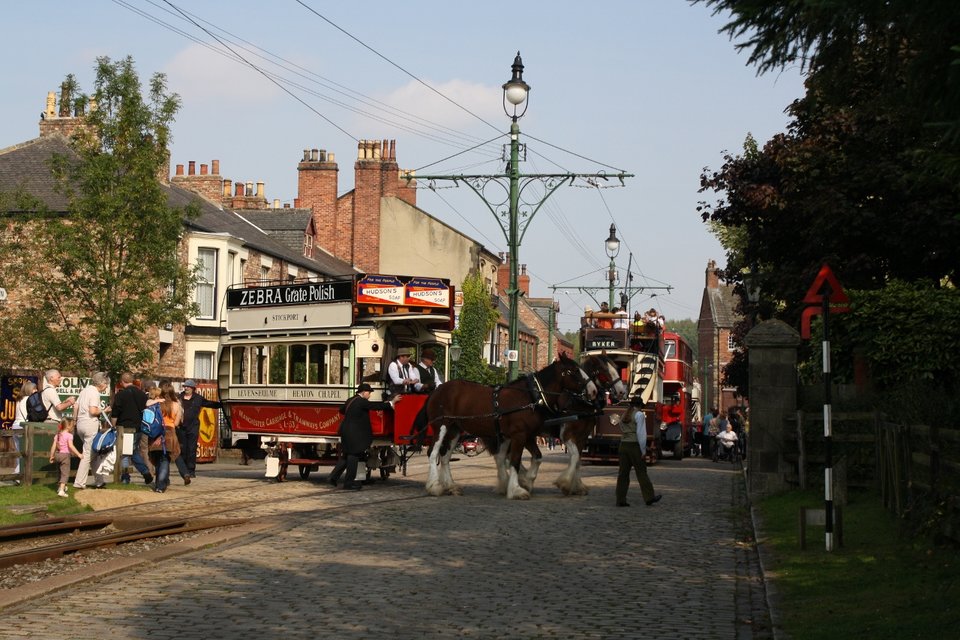
This splendid shot of L53 with its Eades reversible truck in action during a visit to Beamish open-air museum in 2010 shows what W24 must have looked like in its heyday. Photo: Paul Abell, September 2010.
The chassis of another of the Manchester Carriage and Tramways Company’s Eades reversible horse trams – W24 – also survived and is currently on display in the Great Exhibition Hall in an unrestored state. W24 is known to have been built at the MCT’s Pendleton works in 1880
Its number also provides a valuable clue to its operating history since the Manchester Carriage and Tramways Company grew to be such a large undertaking that it was organised into a series of eight operating divisions, each serving a distinct within the greater Manchester conurbation. The prefix ‘W’ indicates that this particular tramcar was housed at the Weaste depot which operated 37 tramcars. Of these, W24 is known to have operated on the Eccles New Road and Oldfield Road route to Peel Green and this is how it was liveried at the time it was withdrawn.
A number of the Weaste cars, possibly including W24, were among the 94 that were purchased by Salford Corporation in 1901, together with 900 horses, in order to maintain a service for passengers while waiting for the conversion of the Company-owned horse tram service to the municipally operated electric traction service to be completed. The final horse trams ran in Salford in March 1903. Presumably the tramcar was then sold into private ownership some time after this but not a lot is known about its subsequent history or the circumstances in which it survived into preservation. What is known is that it was only the second horse tramcar to arrive at Crich, in early November 1961, just two years after Sheffield 15’s arrival.
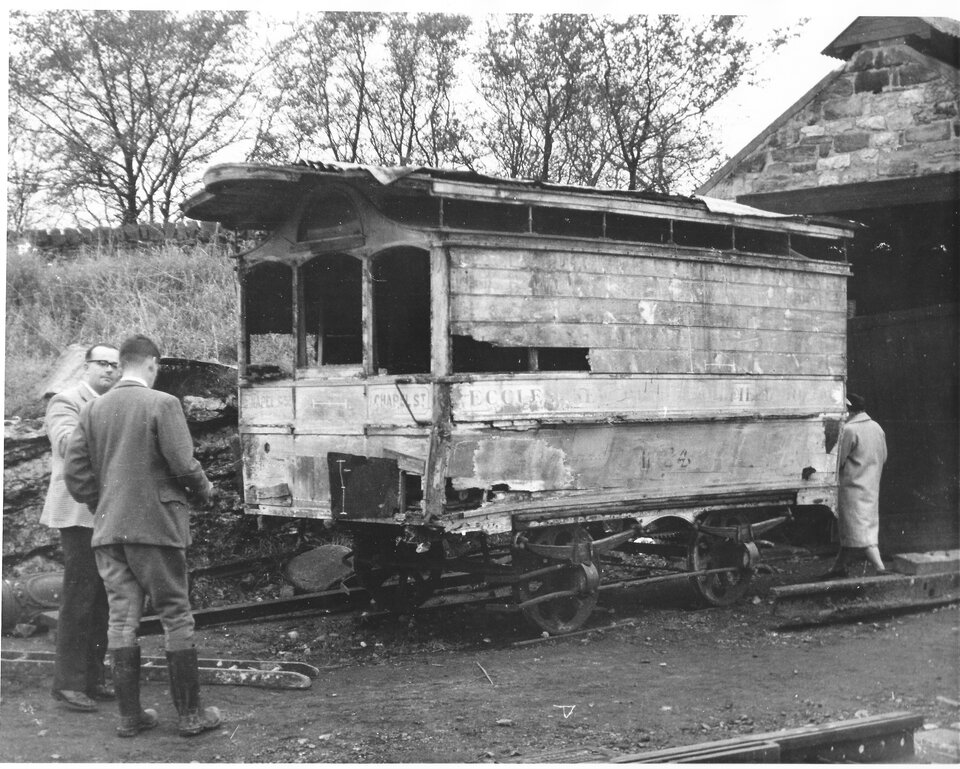
Eades Reversible double deck horse tram W24 pictured shortly after its arrival at Crich. Phototgraph: Bob Tebb, 5th November 1961 on the engine shed spur track.
Although it was initially complete, its body was evidently in such a dilapidated state that it was sadly dismantled on site on 9th December 1961 just a month after its arrival. Fortunately, that brief interval was enough to enable its original appearance to be recorded by a 14- year-old working volunteer at Crich, still depicting traces of its original route livery, while it was temporarily housed on the spur track to the engine shed.
In addition to this Eades chassis, the museum also has an unrelated Eades reversible horse tram body about which even less is known apart from the fact that it was discovered at the back of an inn on Salisbury Plain, where it had been used as a garden shed until the 1960s. This was eventually moved to the Tramway Museum’s off-site storage facility in February 2000, where it remains in an unrestored condition. Not much is known about its origins or operational history, much less the circumstances in which it came to be transported to the Salisbury Plain. It is possible, however, that it may have belonged to a London horse tram.
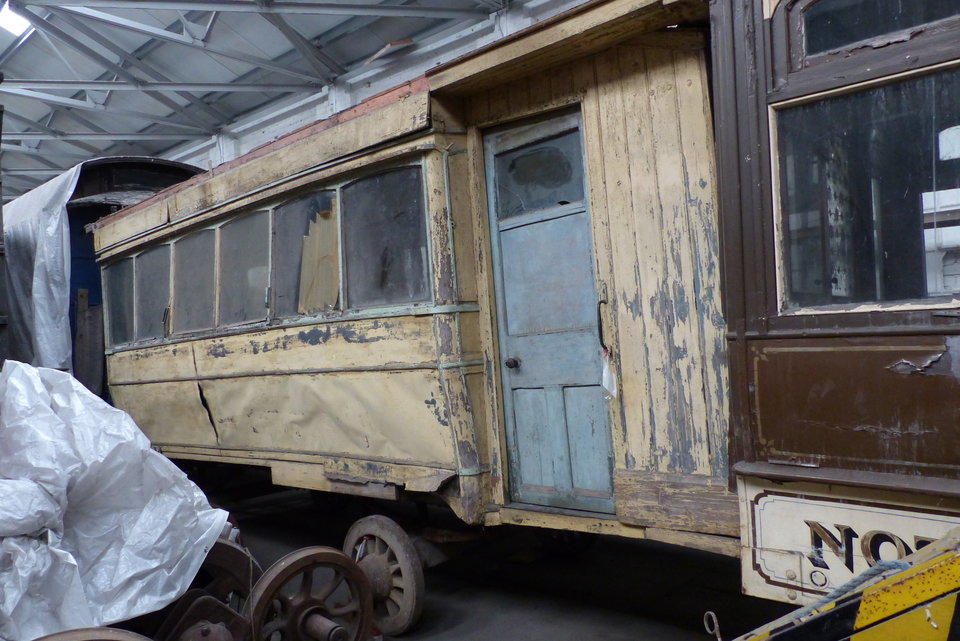
Unrestored body of unidentified Eades reversible horse tram currently in long-term storage. 8/12/2015, Jim Dignan
